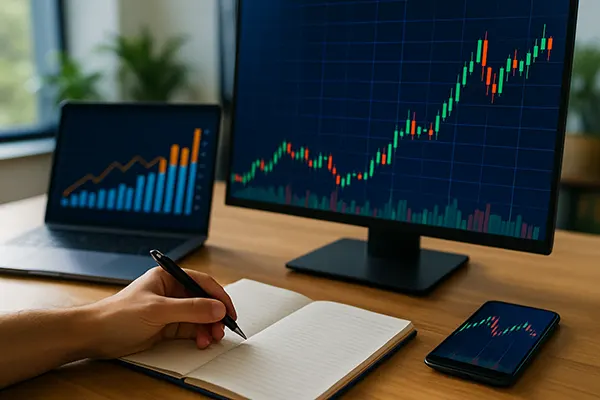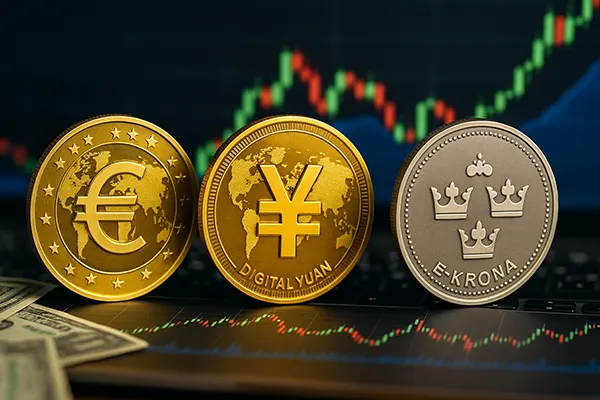
Trader’s Economic Calendar: How News Impacts Financial Markets
Modern traders must navigate a complex global economic landscape, where news events can significantly shift asset prices in seconds. One of the essential tools for any trader is the economic calendar — a timeline of scheduled economic announcements that influence everything from stock prices to currency values. Mastering its use can provide a strategic edge, helping traders anticipate volatility and fine-tune their trading plans.
Key Economic Events That Shape the Markets
Some economic indicators are considered high-impact events and are watched closely by professionals worldwide. Non-Farm Payrolls (NFP) in the United States is one such example. Released monthly by the Bureau of Labor Statistics, it provides insight into job creation and economic health, often triggering sharp movements in the USD and equities. For instance, a higher-than-expected NFP report in January 2025 led to a 0.8% intraday surge in the S&P 500.
Inflation data is another critical event. Monthly Consumer Price Index (CPI) releases across major economies, such as the eurozone or the U.K., influence monetary policy expectations. For example, the UK’s inflation reading in February 2025 exceeded projections, increasing bets that the Bank of England might delay rate cuts, causing the GBP to appreciate.
Central bank interest rate decisions are arguably the most impactful scheduled events. In February 2025, the European Central Bank held rates steady amid recession fears, triggering a decline in the euro against the dollar. Traders using the economic calendar had time to position themselves based on expert forecasts and previous meeting notes.
Understanding Market Expectations vs Reality
Merely knowing when events occur is not enough. Traders must also interpret the gap between expectations and actual results. For instance, if a country’s GDP growth is projected at 2% but arrives at 1.4%, the market might interpret this as a slowdown, prompting selling pressure on that country’s assets.
News is already “priced in” when market expectations align with the forecast. However, when surprises happen, volatility increases. The February 2025 US CPI report was an excellent case — a 0.2% above-consensus figure led to a bond sell-off and increased yields, as traders adjusted inflation outlooks accordingly.
Therefore, experienced traders compare consensus forecasts with previous data and prepare multiple scenarios. This approach ensures they’re not caught off guard and can act confidently under pressure, especially in fast-moving forex and commodities markets.
Incorporating Economic News into Trading Strategies
There are different ways to integrate economic news into trading strategies, depending on the trader’s style. Swing traders may look to enter positions just before key reports, aiming to ride post-news trends. They typically use stop-loss strategies to mitigate risks from unexpected news outcomes.
Day traders, on the other hand, often wait for the news to drop before acting. They track real-time news feeds and use technical tools to identify breakout levels triggered by volatility. For example, traders anticipating market reaction to the February 2025 Fed statement used tight technical zones on the NASDAQ 100 for quick profit opportunities.
Long-term investors also benefit from understanding the macroeconomic backdrop. Knowing when a central bank is likely to change course allows portfolio rebalancing before broader market adjustments. The Japanese yen, for instance, saw renewed interest in February 2025 due to the Bank of Japan’s shift toward policy normalisation.
Balancing Technical and Fundamental Analysis
Successful traders use both technical and fundamental analysis. While charts show what the market is doing, economic news explains why it moves. For example, a currency pair breaking a key support level might be the result of a disappointing GDP report or a surprise political announcement.
In February 2025, the EUR/USD fell below 1.0700 following ECB’s dovish comments, aligning technical signals with fundamental weakness. Traders who aligned both perspectives were able to confidently open short positions with lower psychological stress.
This synergy allows for more complete decision-making. By comparing technical patterns to upcoming economic events, traders improve timing and choose higher-probability setups. This also avoids blind reliance on either strategy, enhancing discipline and adaptability in different market conditions.

Top Platforms for Economic Calendars and Real-Time News
Investing.com offers one of the most comprehensive and customisable economic calendars. Users can filter events by country, impact level, and category. Their calendar includes countdown timers and consensus estimates, making it ideal for preparation. It also offers push notifications and mobile integration for on-the-go updates.
ForexFactory is a favourite among forex traders. It not only displays upcoming economic events but also includes a real-time impact chart based on historical volatility. The platform’s user forum and community discussions provide context and practical insights around each release.
For institutional-level data, Trading Economics and Bloomberg Terminal provide detailed datasets, historical comparisons, and analyst forecasts. These tools are indispensable for professional traders managing portfolios across multiple markets and asset classes.
Choosing the Right Tool for Your Trading Style
Each economic calendar platform has its strengths, depending on the trader’s needs. Beginners may prefer Investing.com’s simple interface and educational resources. Intermediate traders might benefit from ForexFactory’s community-driven data interpretations.
Advanced users who need multi-market insights and API integrations often opt for TradingView or Bloomberg. They allow custom alerts based on technical and fundamental triggers, automating part of the decision-making process and increasing efficiency.
Ultimately, the best tool is the one that integrates seamlessly into your trading workflow. Whether you’re tracking inflation trends, central bank policies, or employment reports, having a reliable and timely economic calendar enhances awareness and supports better trading outcomes.




